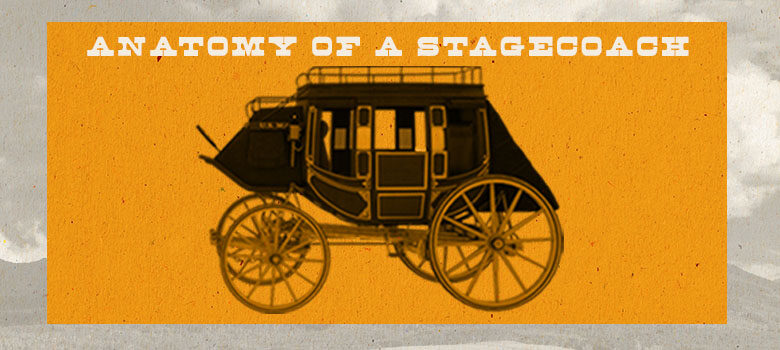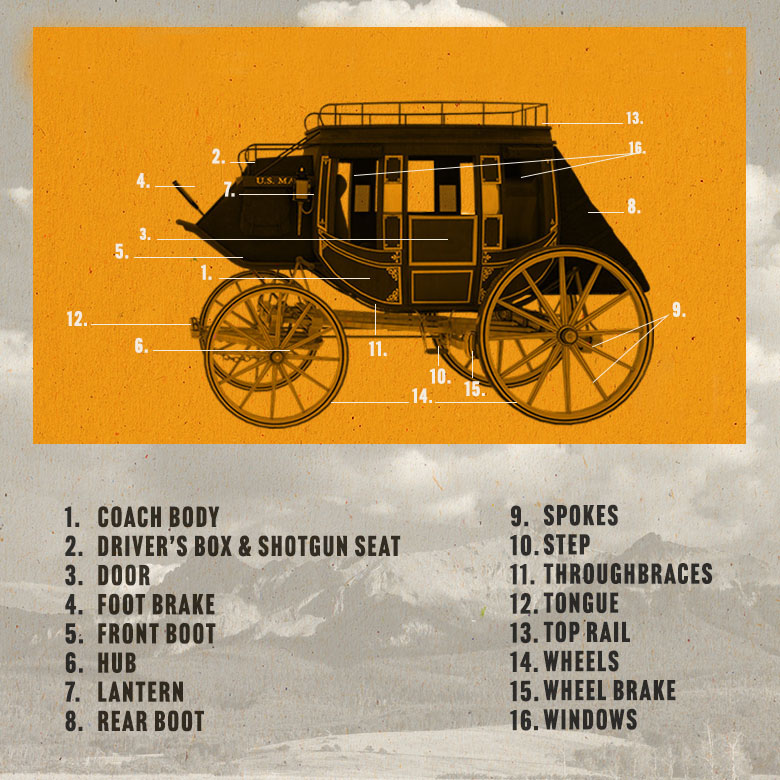Deconstructing the Wagons That Went West

Far beyond the prairie schooner of the early days of Westward expansion, the stagecoach was a giant leap toward the future of transportation. With the introduction of a leather-strap suspension system in 1868, the ride became increasingly comfortable for passengers and took much-needed stress off the horses or mules that were pulling it.
Long after their wheels stopped turning, stagecoaches have now become a symbol of the Old West to the modern world—going all the way back to the 1939 film that shares their name, and that ultimately launched John Wayne’s career. To honor these former modes of transportation, let’s take a deeper look into just how their wheels were once turnin’.

Wheels:
Four-wheel construction. Bigger wheels made it easier for the horses and mules to pull. The front wheels were always smaller than those in the back, making it easier to turn.
Hubs:
The center part of the wheel that rotates on the axle.
Spokes:
The rods of the wheel that extend from the center, outward.
Coach Body:
The enclosed compartment where passengers rode while in transit. These usually included two to three wooden benches and could fit between four and nine travelers.
Driver’s Box:
An area for the driver at the front of the stagecoach that sat less than a foot below the roof.
Shotgun Seat:
The seat next to the driver for an armed guard, which is also considered to be the origin for the cultural phrase, “riding shotgun.”
Front and Rear Boots:
Compartments that stored passengers’ luggage and belongings during the ride.
Wheel Brake:
Controlled the back wheels and enabled both slowing down and stopping completely.
Foot Brake:
Controlled the front wheels, and directed the wheel brake as to when and how quickly to slow down or stop.
Throughbraces:
Akin to shock absorbers, these leather straps supported the weight and acted as springs for the stagecoach.
Step:
The foot ladder that allowed passengers to get on and off the stagecoach easily.
Lantern:
Located by the driver’s box, the lantern helped guide the stagecoach under the stars.
Windows:
Usually consisting of four, and most often bordering the doors, with each featuring roll-up curtains.
Door:
Located on both sides of the stagecoach.
Top Rail:
Railing above the coach body that secured supplies and luggage.
Axle (Not Shown):
Horizontal wooden rod connecting the left front wheel to the right front wheel and the back left wheel to the back right wheel.
Reach (Not Shown):
Wooden structure connecting front and back axles.
Tongue:
Device that extended out at the front of the stagecoach and attached to the horses or mules pulling it.



